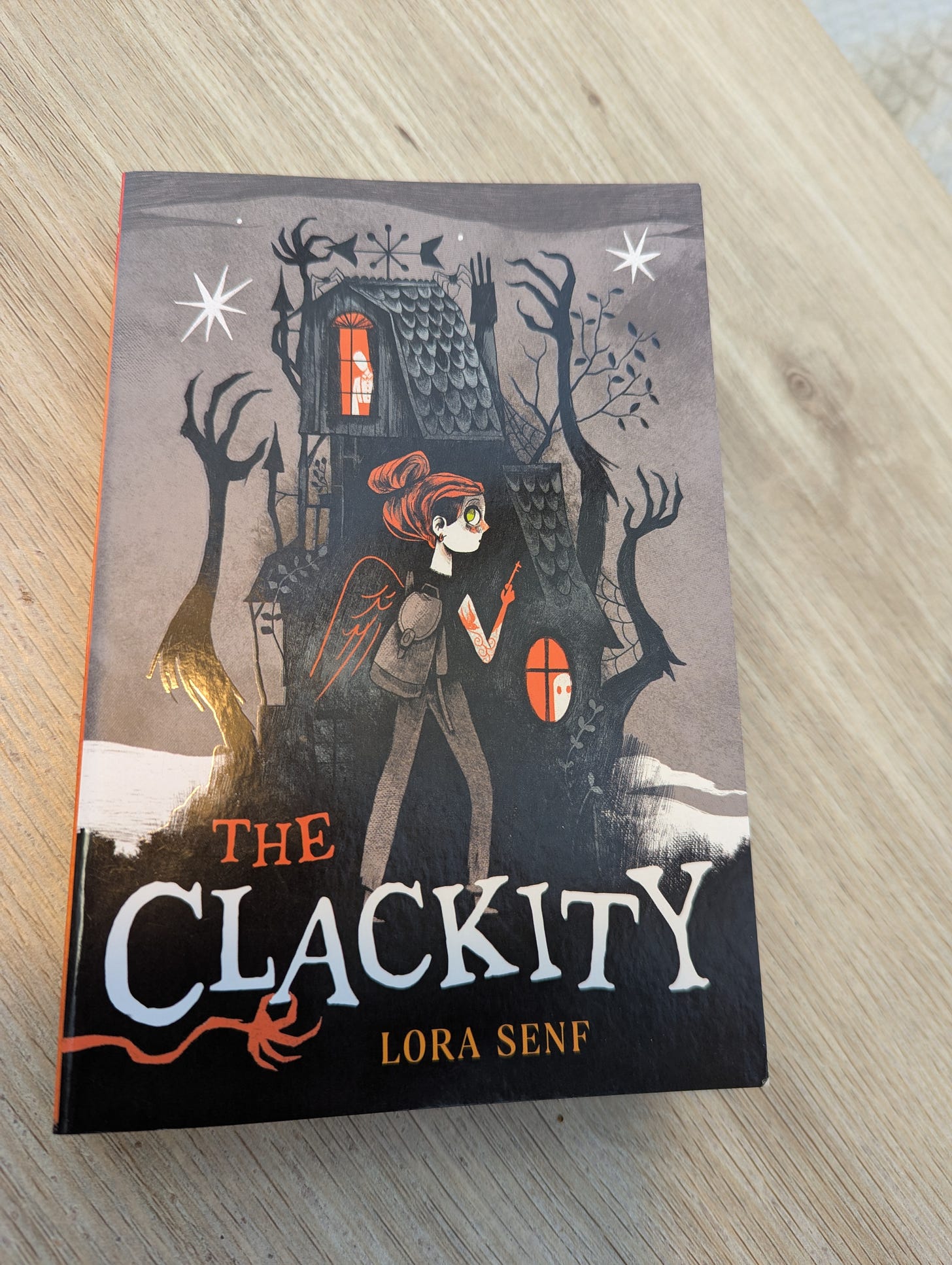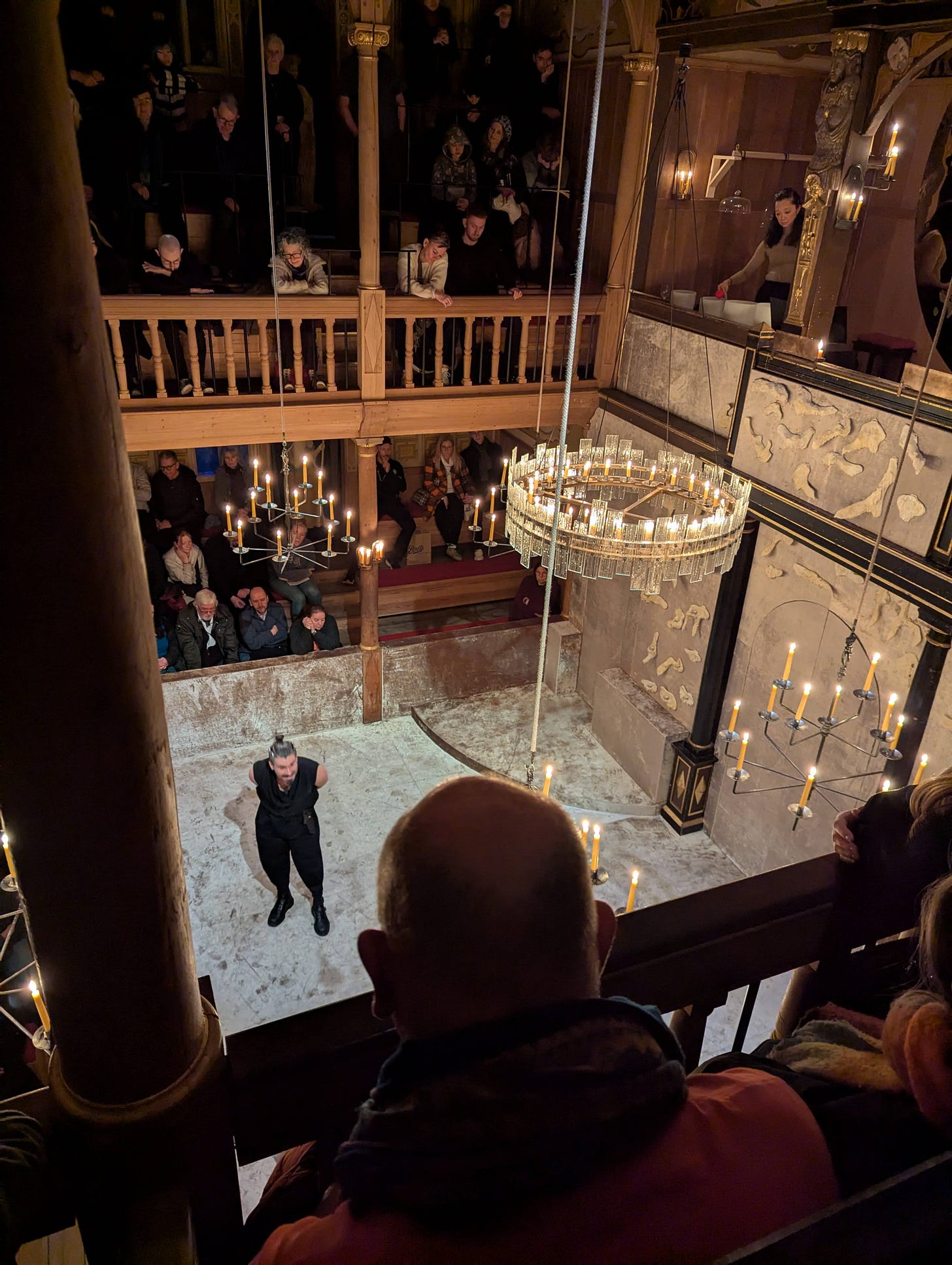What I’ve Read
I’m using the fact that February is only 28 days as my excuse for not getting through so many books this month. The highlight for February is The Clackity by Lora Senf, a middle grade horror. Unlike other spooky or chilling middle grade books I’ve read, this one is genuinely unsettling, with an abattoir as the portal and mass murderer in pursuit. It felt very original, to me, in its weirdness, and I loved the bird guide of the main character, Evie, a sort of moving tattoo.
What I’ve Written
At one point, it looked as if I’d never finish editing my fairytale collection. But I have finally closed the document. I have an illustrator working on illustrations – the preliminary sketches she sent me are beautiful – and a cover needs to be finalised. Then I’ll need to get to grips with formatting! I’m thinking of re-ordering the stories too, to group them into something like Maiden/Mother/Crone – or perhaps an alternative that doesn’t define women solely by where they are in the baby-making journey.
Meanwhile, and as quite a palate-cleanser, I’ve been indugling in some ghostly imaginings. I listened to a range of talks from the online UK Ghost Story Festival, which was very enjoyable and well organised. I’d recommend anyone interested in ghost stories looking it up for next year. Then I began a course with Curtis Brown on writing the gothic and supernatural – or, as course leader Kirsty Logan calls it, the nightside.
Where I’ve Been
There haven’t been many forest adventures this month, apart from my daily walk in the mud bath that our Common has recently turned into. But I have encountered a gargoyle and some dragons in my trip to London to see Shakespeare’s Cymbeline. I spotted the gargoyle on the corner of an ornate Victorian red-brick building in Cornhill, leering at the street entrance to St Peter’s Church, and a devil crouching on the top gable (numbers 54-55 if you want to look it up). A spot of searching on the internet tells me that no-one really knows why these, and other devilish figures that I missed, are there, but a popular story says they were the architect’s revenge on the vicar of the church. The dragons are splendid silver beasts that adorn Leadenhall Market, perched on top of columns that hold up the high, glassy ceiling.
Cymbeline was being performed at the Globe, but in the Sam Wannaker theatre, guaranteeing us a roof and some warmth over the winter. The historical Cymbeline, or Cunobelin, was a British ruler in the time of the Roman occupation, his territory including what’s now Essex, my home county, so this was one reason I was interested in the play. The other reason is that a section of the plot is like the fairytale Snow White – Imogen, in hiding from a death threat, has taken something which causes her to fall into such a deep sleep that her protectors think she is dead.
In fact, the plot Shakespeare wove had very little to do with historical events, and the fairytale parallel was a tiny part of a convoluted tale of disguises, parted lovers, deceit and death plots. The cast threw their all into the production, but I am inclined now to favour the theory that Shakespeare devised this play as a parody of his own previous works.
And finally, I’m going to try a new feature in these newsletters. A monthly character sketch, focussing on a lesser-known figure from the world of fairytales, folklore and legend.
The Queen in The Princess on the Pea
Fairytale mothers mostly fall into one of two camps: perfect and silent (perhaps because they died in childbirth, like Snow White’s mother) or, as stepmothers, vain, selfish and cruel (most famously, Cinderella’s). Occasionally we see a mother who doesn’t fit either of these models. The queen in “The Princess on the Pea” is an example. It’s a shame, for that reason, that there’s so little said about her. But then, the whole story is extremely short, leaving us wondering many things, from why the king is answering the city gate himself, to how such a delicate princess is going to manage the rigours of heir-producing.
When the story opens, the prince has done his bit: he’s searched high and low for a real princess, but none of them convinces. Despondent, he returns home. But one night in a fierce storm a young woman appears at the city gate insisting she is a real princess. “We’ll soon see about that,” says the queen, and devises the test we know so well: piles and piles of mattresses and eiderdowns with a solitary pea at the bottom.
Who is this queen, and why does she do it? Comparing a range of translations in my collection and online, I’ve found her referred to both as “old queen” and “Dowager”. Is she the mother of the prince or the king? If the latter, she’d count as a “crone”, which interests me in my search for positive – or at least, not evil, cackling – old women in fairy tales. The original Danish seems to refer to both king and queen as simply “old” – old king, old queen – and there’s no such thing as a king dowager, so I’d conclude that the queen is the king’s wife and the prince’s mother. Personally, I prefer to see her as the prince’s mother, taking that common attitude of questioning whether anyone is good enough to be her son’s partner! It seems, from the text, that she makes the bed herself (just as the king opens the city gates himself) rather than simply giving orders. Perhaps she feels it’s too important a task to leave to the servants.
And what gives her the idea of testing the princess this way? Was she as tender and sensitive as a young woman? Maybe she went through a similar test. If she did, I wonder if she made the one for her prospective daughter-in-law easier or harder than her own? At any rate, she seems to be satisfied with the outcome. The marriage goes ahead and the pea is put into the cabinet of curiosities, and cited by the narrator as proof of the story.
I’ve relied mostly on this version of the story for my conclusions: https://hcandersen.dk/en/vaerker/8_The-Princess-on-the-Pea/ with some additional help from Google translate. I have no knowledge of Danish myself.
And finally…
A Fairytale Recommendation
If you enjoy reading fairytale studies, Alyssa Curtyane is well worth following on Substack. Here’s a link to her latest post, on a subject not often written about — love between siblings.











Thanks, as always, for your support Lynden 🙏
The Princess and the Pea was one of my favorite fairy tales when I was a kid. I was intrigued by the princess showing up by herself, drenched to the core. There are so many unanswered questions about this story, which is perhaps why it continues to fascinate. I loved your reflections on it.